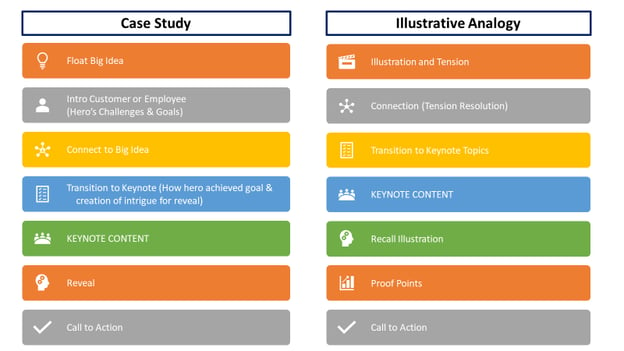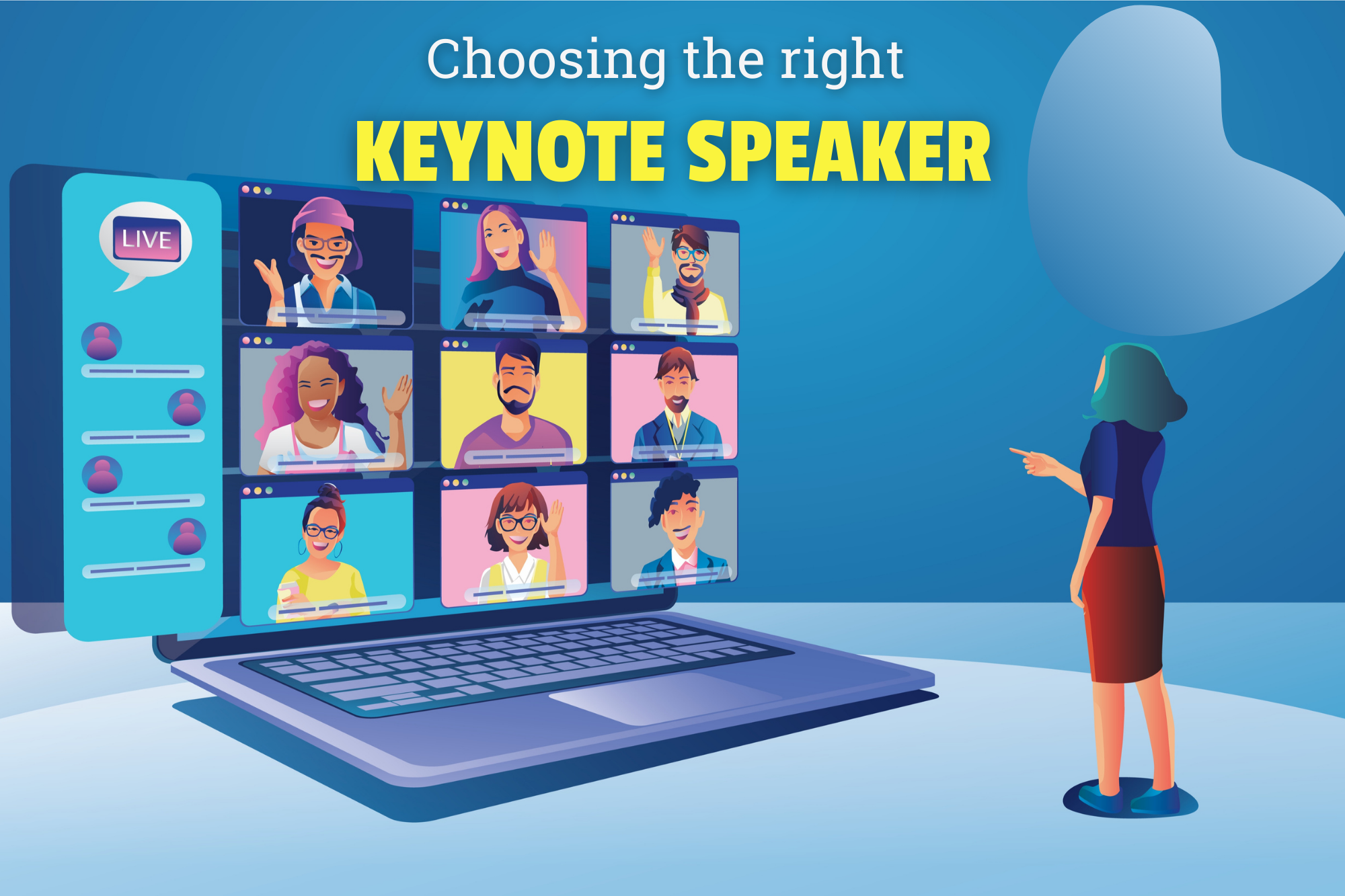8 Quick Rules to Follow When Storytelling
It’s Q4, and the smaller deals in your pipeline aren’t going to make your year. But you have a solid chance to make club on the beautiful beaches...

When your executives take the virtual stage at your upcoming Sales Kickoff (SKO), a story needs to be told. Here’s the scenario. 2020 has been an unprecedented year and your company is not only standing, it is roaring! Your key metrics are healthy and your forecast is solid. Now here’s your choice. You can either present the usual, charts, graphs and numbers or, you can captivate and engage your sales and client success organizations with a story that paints an image of your past and your future. Guess which one will be more effective?
Leaders know that figures and messages alone don’t speak to people. Stories speak to people. Stories take sanitized slides and make them memorable. When you tell the story of 2020 and foretell the story of 2021, you separate yourself from other executives and motivate your team. But how?

Your story starts with the “Big Idea”. The Big Idea is the primary message you want to leave with your sales team at the conclusion of your keynote. For example, in the scenario above your Big Idea could be accelerating beyond your current momentum. Perhaps it is tenacity in times of turmoil. Or, maybe it is a message on the importance of teamwork.
Next, you need to build a path to your Big Idea through a story. The path starts with your point of view on the challenge you solved last year and the challenges in the coming year. However, you need to break typical presentation patterns to optimize message retention. Do not let PowerPoint build the path with bullet points of your team’s accomplishments and future needs. Instead, let your story do this for you. Begin by developing story ideas by connecting the Big Idea to your personal and professional experience. Ask yourself questions like:
Answer these questions in a brainstorming session with a colleague. Capture as many answers to these questions as possible.
Examine your ideas from the exercise above and determine your top three candidates for your path to your Big Idea. These candidates will help determine your Story Arc.
The story you tell might be based on an illustrative analogy, case study or insight. At 2Win, we’ve architected templates around each of these called “Story Arcs”. The type of story you tell and the architecture of that story are determined by your path to your Big Idea. For example, if you believe your best story candidate is related to a professional experience you had during the year with a salesperson’s success story, you will likely choose a Case Study Story Arc. If however, you have a personal experience built around one of your favorite hobbies, you would choose an illustrative analogy story arc. The following illustration provides a comparison of a Case Study and Illustrative Analogy story arc:

As you can see, a Case Study style Story Arc differs from an Illustrative Analogy. The Big Idea in a case study is floated or, introduced but not completely revealed. You want to tease the audience with your key takeaway, introduce the customer or employee’s challenges and goals, connect them to your big idea and tell the audience you’ll reveal the results at the end of your presentation. This technique draws upon the power of curiosity and keeps the audience members engaged and curious about the outcomes. At the end of the presentation you reveal the results, summarize your big idea and present your call to action.
An Illustrative Analogy takes a different path to your eventual Call to Action. This style of story arc uses an illustration from your personal experiences that is seemingly unrelated to your big idea. When you introduce your illustrative analogy you want to create tension with the story. A positive outcome is in doubt throughout the introduction of the story. Within sixty seconds, you connect your story to your primary message. The bridge between the two often sounds like “…and that reminds me of (Big Idea)…” Next, you finish the story constantly connecting it to your big idea, transition to presenting your keynote topics and present your content. Your story concludes by recalling the illustrative analogy, present your proof points and finally your call to action.
Great storytellers create visualizations in the minds of their audience through spoken word. However, not all learners are auditory. You also want to connect with visual, written and kinesthetic learners. This is done by connecting your story to great visuals (visual learners), occasional written words (written learners but, don’t overdue the bullet points!) and having a story that puts the audience member in the situation (kinesthetic learners).
Think of your virtual SKO production as more important than your hotel ballroom in-person kickoffs of the past. You wouldn’t have stood on the floor with a laptop on a table connected to a small projector and a six foot screen in front of 100 or more people. Instead, you would probably had a production crew that professionally handled sound, camera, projection and a proper stage. With a virtual sales kickoff, your presenters need a producer for their web or professional camera positioning, lighting, background, sound and audience management. You probably have people vetting presenter’s materials and may even require rehearsals. The virtual SKO requires each presenters production to be checked as well. At 2Win, we often help clients build their stories, advise on production and coach their rehearsals.
Too many executives stop working on their keynote story once they’ve produced what they believe will be a winning Story Arc. I’m not talking about the obvious elephant in the room – lack of rehearsal. Everyone knows how important it is to rehearse a presentation and story. Rather, I’m referring to the importance of being intentional with your virtual performance techniques. These techniques are the “X” factor that take a good story and make it great!
Vocal Variety – Virtual presentations tend to flatten out vocal variety. Use purposeful variations in your voice when you want to clue the audience in on a secret (speak softer) or get them excited with your reveal (up in pitch and louder). Don’t be flat!
Intentional Movement – When you’re live on a stage you know not to stand behind the podium and address an audience. Instead, you use intentional movement to bring in the left side of the room, the center of the room and the right side of the room. With virtual, it’s similar but, different. You still need to stand when you present. It helps you with your vocal variety and enthusiasm. But, on a webcam, large hand gestures look out of control so keep your hands closer to your sides. The exception to this would be if you have a virtual production that mimics a stage. Virtual presentations provide a unique advantage over in person, large-stage presentations. They allow you to have eye-contact with every participant in the sales kickoff! Be intentional with eye contact at key places in your story. Look directly into the lens of the camera and make your points.
Screen Sharing and Video – Your sales kickoff audience wants and needs to relate to you and connect with you during your sales kickoff keynote. For those reasons, it is important that you turn on your web camera and make eye contact with the lens. Once you’ve opened your story and it is supported by your slides you want to share you screen and your video. If you need your audience to focus solely on your slide, turn off your camera. If you want your audience to focus on a key message or key delivery during your presentation, turn your camera on. -
Virtual Tools – Your team has pre-selected the virtual platform for your sales kickoff. Make sure the production team is well versed in the use of the tools and how to make sure you and they engage the audience. For example, try and pose a question to the audience at the start of your presentation and ask them to “chat” their responses. This informs the audience that you plan to have them interact and engage with you. Integrate some surveys into your presentation. Have some “friendlies” on the session and call upon them at pre-determined points. Have your production manager take them off mute, come on camera and respond. Make it sound like you are spontaneously calling upon them. This keeps everyone engaged and ready to also be called upon.
At 2Win, we teach our clients these strategies and techniques and work with them to fine tune their virtual presence. After reading this blog, you may realize that many members of your team have gaps in these skill areas. If you want to learn more, click on the button below and we will engage with you to learn your specific needs. If you want one-on-one coaching for your virtual SKO keynote, we’ll be happy to help.

It’s Q4, and the smaller deals in your pipeline aren’t going to make your year. But you have a solid chance to make club on the beautiful beaches...

Ahhh, the glory days of a sales kickoff (SKO), where hundreds or even thousands meet for an energizing five days in places like Las Vegas, Singapore,...

In Part 1 of this series, we focused on how you can ensure the success of your Keynote speakers. In part two of this series, we will explore why an...